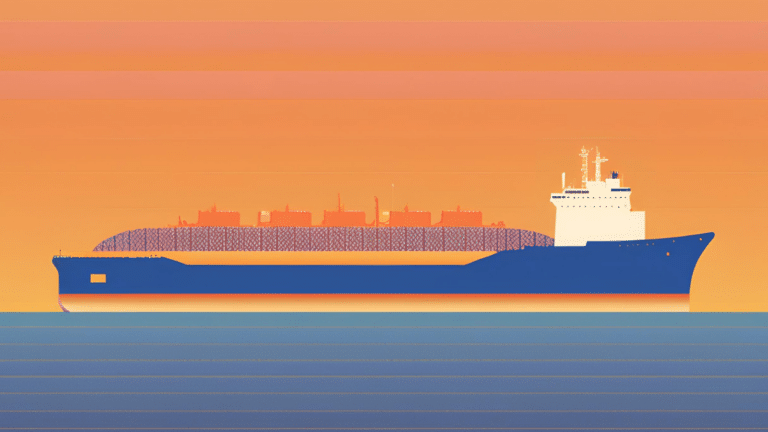Energy Intelligence
MARKET VIEW: Arb Window Will Have to Go Deeply Negative to Shut-In US LNG Exports
*This article is reprinted with permission from Energy Intelligence Group.*
With spot LNG pricing at multi-year lows in both Europe and Asia, and the arbitrage window for US LNG remaining narrow, market observers have returned to the question of whether US export terminals will see shut-ins – and if so, would it matter?
“We have come close to testing US export capacity utilization under substantial price pressure in 2016, but US LNG exports were only beginning to ramp up back then,” said Akos Losz, senior research associate at Columbia University’s Center on Global Energy Policy. But now, many first wave US LNG projects are either online or in the commissioning phase, which changes the dynamic.
“If overseas prices continue to decline in the months ahead, then we might once again put the system to the test, this time in a more mature stage of the industry,” Losz told Energy Intelligence (NGW Jan.7’19).
But does this mean there would be capacity shut-ins, with offtakers ceasing to lift US LNG cargoes in the face of a negative export arbitrage? The answer is “complex” said Losz. “US LNG supply is probably more resilient to short-term market imbalances than simple netback economics would suggest.”
A decision to stop lifting cargoes depends a lot on the individual conditions for each market player. Losz said the theoretical shut-in point – based on the standard tolling formula of 115% of Henry Hub plus a fixed fee – is not close at hand.
“Prices have still some way to fall,” he said, suggesting that European gas prices would need to drop below the $4/MMBtu level for shut-ins across the Atlantic to enter the conversation. Europe at $4 is “a very low price level by historical standards.”
The shut-in point certainly looked close last week with UK NBP was seen around $4.35/MMBtu. Henry Hub Nymex was around $2.60, which would put the cost of US Gulf Coast gas at $5.99, according to a typical tolling arrangement – 115% times Henry Hub plus a fixed tolling fee of $3. The arbitrage window for Europe therefore comes out at negative $1.64/MMBtu, without counting shipping costs.
However, not every seller faces this money-losing equation, and most will continue selling if marginal costs are covered, if not their total costs.
“Some exporters source their feed gas at well below Henry Hub, and thus they will probably not stop lifting cargoes even when the arb seems marginally negative on a Henry Hub basis,” said Losz. For example, Permian Basin gas, which will feed the Texas Gulf Coast LNG projects, was trading last week at just 12¢ for Waha Hub monthly supply thanks to a persistent gas glut (NGW Apr.29’19).
Also, “some exporters will have long-term arrangements for pipeline and shipping capacity, so the transportation cost in their case will also be a sunk cost,” he said.
“Different types of players will have different abilities to actively trade and optimize their gas portfolio when the arb closes,” Losz explained. Companies most able to scale back exports to optimize their positions – portfolio players or pioneer Cheniere Energy, for example – “are the least likely to have to, because their variable costs are probably lower than for others.”
The marketing arms of the terminal operations – ie., Cheniere Marketing and eventually Tellurian Marketing – “may be willing to take the rejected cargoes off the hands of their customers and keep exporting, even if the offtakers decide to not export due to unfavorable economics.”
There are also contractual limitations to rejecting US LNG cargos on short notice. Losz explained that contracts might require offtakers to notify terminal operators several weeks or months in advance if they want to underlift their contracted volumes. As a result, offtakers would have to be reasonably confident that the arb will stay closed for at least a few months before it decides not to lift a cargo.
“Overall, I think the arb will have to fall deep into the negative, or stay marginally negative, for an extended period of time before we actually see capacity curtailments at the US export terminals,” Losz concluded.
Not everyone shares that view. “As European inventories approach full, the global gas markets will likely have to price low enough to turn off at least some US LNG exports,” said the Bank of America Merrill Lynch in a research note. “The timing could be especially bad for US markets, as the 2 Bcf/d Gulf Coast Express pipeline is targeting an in-service date of October 2019, allowing cheap Permian gas to reach the Gulf” (NGW Apr.29’19).
***
The Natural Gas Week composite spot wellhead price this week is $1.50/MMBtu, 11¢ more than last week and 21¢ less than the May 7, 2018, average. The spot delivered-to-pipeline price this week is $2.25/MMBtu, 7¢ more than last week and 5¢ less than last year’s corresponding average.
Michael Sultan, Washington






